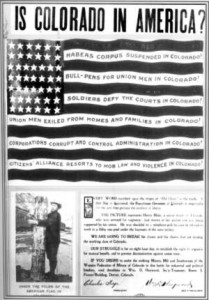Brief by Central Staff
Wildlife – August 2003 – Colorado Central Magazine
While we like prairie dogs in general, we never thought of them as pets; one reason we keep cats is to discourage small rodents from making themselves at home here. But there are people who feel differently about prairie dogs, and now it appears the critters are spreading the monkey pox virus to humans.
On that account, the Colorado Wildlife Commission approved an emergency regulation on July 10 which bans the importation of prairie dogs, as well as six exotic species of African rodents.
We don’t know where the idea of keeping prairie dogs as pets first arose, but back in April, the Wall Street Journal had an article about Linda Watson, a Texas woman who made about $30,000 a year for six weeks of work — that work was collecting young prairie dogs and selling them to a broker, who in turn sold them as pets.
Keeping them as pets is illegal in 18 states, but most of Watson’s critters went to Japan, where they fetched up to $300 a head.
The Journal article observed Sayumi Tashiro of Yokohama, and her pet Siva. She provides him “with a wheel for exercise, prairie-dog pellets for dinner, and much appreciated attention when she returns home from work at the end of the day. ‘He loves being petted,’ Ms. Tashiro said, as Siva on a recent evening stood on his hind legs, then toppled over on his back for a tummy rub.”
Japan banned the import of prairie dogs on March 1, because of fears they could spread plague.
But it’s a different disease — monkey pox — which put prairie dogs in the news. A pet store in the Midwest kept prairie dogs with some imported Gambian giant rats (sounds like a charming pet), and the rats apparently spread the virus to the prairie dogs, which in turn infected humans.
Monkey pox, a rare disease formerly confined to central and western Africa, is related to smallpox, although it is not nearly as deadly. Symptoms appear about 12 days after infection (usually from a bite or other contact with an infected animal’s body fluids), and include fever, headache, muscle aches, backache, and swollen lymph nodes. Three days after the fever begins, a rash breaks out, which leads to bumps that get crusty, scab over, and fall off. The disease lasts about four weeks.
Because the virus is a close relative, smallpox vaccinations (common before about 1970) often prevent monkey pox. Our word “vaccine” shows another viral relationship — between smallpox and cowpox. In 1796, British physician Edward Jenner observed that milkmaids who had suffered from mild cowpox were immune to deadly smallpox.
By scratching people, then introducing the fluid drawn from a cowpox lesion, he could make them immune to smallpox. Since the process started with cows, he used the Latin term for “from a cow,” vaccinus, to describe it.
Another piece of linguistic trivia: “Smallpox” is called that because the term “great pox” was applied to syphilis. “Pox” is the old spelling of the plural of “pock,” a sore (still used in “pock-marked,”). Now you know how Shakespearean characters were really cursing their enemies with “A pox upon both your houses” — something along the lines of “May you all die of loathsome venereal diseases.”
At any rate, prairie dogs have their charms. Just admire them from afar, though, and don’t take one home.


